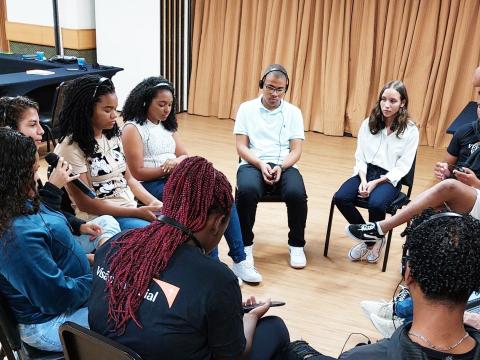Practical and straightforward steps for our digital safety

By Maria Clara, aged 14, young leader from Brazil.
Today, it is widespread for children and young people to be very active on social networks, so much so that the internet has become a tool for all users, including applications such as Instagram, Facebook, Twitter, and WhatsApp.
A concerning reality that increases over time is when people are victims of financial scams, suspicious messages from blocked profiles, hacker attacks, viruses and even fraud. To make things worse, many risks impact directly children and young people. For instance, a young person may arrange a meeting with people online, and when they meet them, they are not what they seem, leading to possible cases of rape, abuse or even kidnapping. Therefore, we must pay attention to the precautions and signals on social media.
Now, what can you do to avoid these situations? In my experience, as a young person who uses the internet, it is essential to use the security methods to prevent this. For instance, we must create strong passwords for our accounts, never share personal information on social networks, install reliable antivirus software, and activate application security features (privacy policies). Furthermore, we must change our passwords once a month and be on the lookout for links submitted anonymously. All of this is important for everyone's privacy and security.
I am 14 years old and use all these protection methods, which have been very effective for my digital safety. I learnt all of this whilst participating in the Digital Accelerator project, which aims to amplify the voices of children and young people digitally. Thanks to these learnings, I feel empowered to access the digital world safely. Happy International Safer Internet Day.